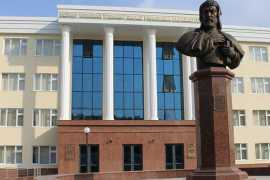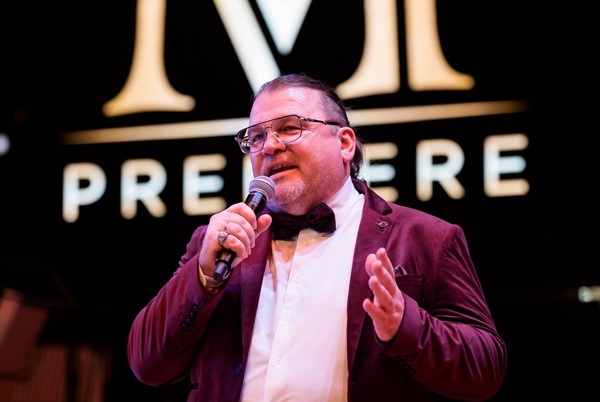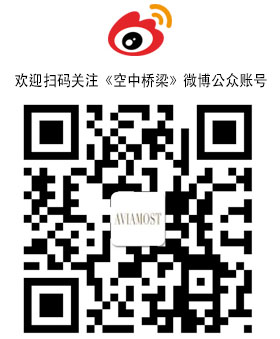The role of scientific literature and researches created by scientists from the Republic of Uzbekistan in the development of teaching foreign language

Abstract. The article is devoted to learning Uzbek foreign language scientists’ contributions to the development of teaching foreign languages and the scientific literatures and researches created by them and to popularize their latest scientific innovations on foreign language teaching.
Key words: foreign language, mother tongue, interference, interlanguage interference, interlingual similarities, typology, typological categories, linguistic and nonlinguistic typology, phraseology, phraseological units, literary norm.
There are a lot of foreign language professors scientists in Uzbekistan. The role of foreign language scientists of Uzbekistan is very big in the development of teaching foreign language methodology. They contributed to progress of the field indirectly with their scientific works. We shall learn and analyze the heritage of the great linguist-scientists- O’tkir Qurbonovich Yusupov, Jamoldin Bo’ronov, Abdi Eshonqulovich Mamatov in the following:
O’tkir Qurbonovich Yusupov was the great linguist. He was born on 15 February, 1938, in intellectuals’ family in Tashkent in Uzbekistan. After leaving school with silver medal 1955, he entered English department of Tashkent State foreign language pedagogical institute. He was very active in the scientific life of the institute.
O’.Yusupov worked the first as a teacher, the head of department, dean and the first prorector at World Language university in Uzbekistan. He was public educator, labor veteran.
O’.Yusupov defended his candidate’s dissertation named “Comparative analysis of conditional sentence clauses in English and Uzbek” in 1971 and doctorate dissertation themed “the problems of contrastive linguistics” in Moscow in 1994. O’.Yusupov was given academic title on English language in 1987.
O’.Yusupov trained more than 15 doctors and candidates of sciences for Uzbekistan. He was the scientific supervisor and opponent of over 50 master’s dissertation and he wrote and edited several books. He repeatedly improved his qualification in Great Britain and Moscow. The number of works he has created is more than 100, and the following thoughts are important and valuable for the development of the field.
1) development of methodology and principles of comparison of mother tongue and foreign languages;
2) new scientific ideas about grammar and syntactic categories;
3) interpreting interferences among different language and their types and causes;
4) the role of deforms is great in teaching foreign language;
5) the advantages of linguodidactics and intercultural communication in teaching foreign language (The materials of scientific conference. Tashkent 2012 p.12-16);
6) predefining the features of new type of applied(practical) grammar ( The materials of scientific conference of Republic. NamSU 2009. P.275-277.)
7) new ideas about mood categories in English language and others (Contrastive linguistics of the English and Uzbek languages. Tashkent- 2013).
O’.Yusupov was the great Uzbek scientist who improved contrastive linguistics on teaching foreign language. His theory and considerations about the field and the manuals created by him serve as a ready material for the development of foreign language teaching methodology.
We note his innovative ideas on foreign language teaching methodology in the following:
1. Foreign language and mother tongue can be compared for theoretical and practical purposes. Because of remarkable increase in foreign language learning in our republic, comparison of foreign language and native language for practical purposes is a topical issue.
Defining importance or unimportance of interlingual similarities and differences methodically that is, analyzing them according to interference and transposition.
2. Linguists and methodologists divide interlanguage interference into three types on the level of language. They are lexical, grammatical and phonetic. O’.Yusupov suggested firstly that interlanguages interference can be divided according to its result:
1) interlanguage interferences which lead typical mistakes
2) interlanguage interference that causes disruptive communication.
The differences in speech sounds, syllable, words, word combinations between mother tongue and foreign language originate the first type of interference, such as, in Uzbek students pronounce *zis instead of this,*sri instead of three.
We may show the differences between high-end language units for the second type of interferences, for example, most of Uzbek students have difficulty while they are translating like the sentences ”Hali uyimga yetib kelmasimdanoq yomg’ir yog’ib ketdi”, ”Qanchalik ko’p o’qisang shunchalik ko’p bilasan” into English. The reason is that there is no structural similarity between above sentences in Uzbek and their translations in English.
3. In O’.Yusupov’s opinion, comparing languages in practical aim requires identification of inter-language equivalents, (for example equivalents of Uzbek-English, English-Uzbek) because when the person begin to learn any foreign language, the first, he forms his mind in the brain in his mother tongue, translates it into foreign language, then he directs the translation into conversations. Therefore, it is desirable to create parallels on mother tongue – foreign language, foreign language – mother tongue in order to develop this situation. To the scientist mind, the translation process in brain proves that it is wrong that western methodologists’ opinion which translation exercises are not necessary to teach foreign language.
4. The one function of comparing languages is to show effectiveness of when and how to use foreign language and mother tongue phenomenon in the course of the lesson.
5. O’.Yusupov proved that the subjects cultural linguistics and intercultural communication are more significant than cognitive linguistics.
6. Clearly demonstrating the properties of new types of applied grammar is one of the scientist’s contributions to the development of foreign language teaching.
7. The discovery interferences in learning English language for uzbek students by O’.Yusupov plays an important role in developing a foreign language teaching.
8. Theoretical and practical comparisons of languages are used according to their specific goals.
Practical comparison of languages depends on foreign languages methodology. The knowledge gained from this subject will enhance the ability of the students to master the foreign language skills.
It can be said that it is an Uzbek linguist who has a positive influence on the development of a number of fields of foreign language teaching.
Professor Jamoldin Bo’ronov was a well-known linguist, pedagogue, and scientist who contributed to the development of teaching foreign language. He was born in Andijan in Uzbekistan in 1933. He studied at the English department of Tashkent State foreign language institute. When he was a student he was active on the scientific society of students. He made interesting scientific lectures on English grammar at that society. After graduating the institute he worked there as a teacher. J.Bo’ronov went on his study at Leningrad university in 1958-1961s and he defended his candidate’s dissertation on “suffix -man”. After that he came back to his institute and he worked as the head of the department for 20 years. Then he was a rector of foreign language university.
J.Bo’ronov was the author of over one hundred scientific works. Some of them followings:
Dissertations:
1. “–man” half-suffix in English in 1961 it is Candidate’s dissertation.
2. “Typological categories and comparative study of languages”. Мoscow-in 1979 it is Doctorate dissertation.
Professor J.Bo’ronov proved by his Candidate’s dissertation that the word “man” lose its independent meaning in the component of another word. For example, “woman-ayol, women-ayollar, salesman-erkak sotuvchi, saleswoman-ayol sotuvchi”.
Professor J.Bo’ronov was the one of the scientists who developed contrastive linguistics on teaching foreign language in Uzbekistan. His considerations about comparative linguistics were written at his three works. They are followings:
1. “Comparative grammar of English and Uzbek languages” Tashkent 1973.
2. “Typological categories and comparative study of languages”.(it is doctorate dissertation) Moscow, 1979.
3. Comparative typology of English and Turkic languages. Moscow- high school in 1983.
When we speak about professor J.Bo’ronov’s theory on comparative linguistics we should note his term “typology”. He gave the term typology to comparing any languages. He said: “the subject of typology is the object of any language comparisons”.[1]
Professor J.Bo’ronov’s opinions about typology are followings:
Typology is divided 2 types according to depending on the classification of objects or phenomena. They are:
a) Linguistic typology
b) Nonlinguistic typology
Linguistic typology is learned comparing the systems of different languages, generalizing the categories of languages and their typological classification.
Nonlinguistic typology is used other subjects that differ from linguistics, such as geology, history, art and literature. It is learned the classifications according to the similarities and differences of various subjects and events.
According to levels of languages there are following sections of typology:
a) phonological and phonetic typology
b) morphological typology
c) syntactical typology
d) lexical typology
Phonological typology is learned phonologic signs, peculiarities of phonemes, and their syntagmatic connections in word structure, the phonological characteristics of sounds and the ways of dividing those groups.
Phonetic typology is such a section that it is learned the similarities and differences of vowel and consonant sounds physically during pronunciation.
Morphological typology deals with making languages classification on their morphological characteristics and determining the expression of morphological category in different languages. For example, being expressed morphological categories like gender, number, person, tense, aspect in different languages is considered the object of morphological typology.
In Syntactic typology we may learn word combinations, the semantic and formal types of sentence, word order is free or stable, connections of subject, predicate, objectives, impression of intonation to the meaning, depending of suffix, prefix on different word order. Morphological and syntactic typologies organize grammatical typology.
Lexical typology teaches the peculiarities of lexical units, their similarities and differences on the structure, lexical features of the words which belong to different series.
During learning J.Bo’ronov’s scientific activity we convinced that professor’s works serve as ready material for developing grammar and vocabulary in foreign language teaching methodology. Nowadays, the literatures created by him are used by foreign language specialists.
The influence of each scientist in society is determined by the proportion of his research. It is possible to feel the closeness of this wise idea in the example of our teacher professor Abdi Eshonqulovich Mamatov’s lifestyle. He is holy and dear to all of us, a believer and mature person who taught you and us the knowledge of linguistics.
He was born on 15 April in 1947 in district “Bulung’ur” of region Samarkand in Uzbekistan. In 1965 after leaving school he entered the French philology department at Samarkand State University named after Alisher Navoi. In 1972-74s he began his activity at Samarkand State University as a teacher.
A.E.Mamatov has been continuing her academic career at National and Foreign Languages universities of Uzbekistan for many years. His services are unique in raising the scientific potential of both universities.
Professor Mamatov is a prominent novelist and scientist, a great speaker who has a role and a voice outside of the Republic and beyond its borders.
The contribution of the teacher to linguistics and other sciences is so extensive that we can say that the scientist is a follower of our great scientists. He is a great scientist who has created a comprehensive school of linguistics.
The greatness of the teacher is that firstly he learned the proficiency of the Uzbek, Russian, Roman, and German linguistics, secondly, a great contribution to the system of linguistic norms in the creation of immortal artifacts and the development of Uzbek linguistics, thirdly, A.E.Mamatov created his own school and prepared many students and fourthly, in a science competition with Russian scientists, he admits that the teacher is a mature scientist.
As we look at the Professor Mamatov’s scientific work let’s briefly describe some of the scientific works written by him and their basic ideas.
A.E.Mamatov defended his candidates dissertation in 1979. The scientific research was dedicated stylistic features of phraseological units in French language.
Professor focused his attention on studying interesting issues related to lexical phraseological language norms in literary language in his doctorate dissertation. History formation of language norms, its application and the linguistic features of the lexical units were studied by professor Mamatov in the dissertation.
Professor’s monograph named “Essays on French phraseological stylistics” was written for high school students of higher educational institutions and faculties specializing in foreign languages. The purpose of the monograph is to help the students learn practical French language phraseological units and aggravate practical language competences in this area. This task is to define the functional stylistic features of French phraseological units, to show the semantic stylistic states of the phraseological units, to have rich material in the use of French language phraseologies, the author individual approach, and describes the emergence of a funny situation in phraseology in French. Language materials in this book are based on sources from stories and novels from French writers in which financially stylistic features of phaseological units are expressed by means of many examples.
The bibliographical index “Bibliographic index of works on the culture of speech and the language norm” which is created by the A.E.Mamatov, is composed of two parts which are devoted to speech culture and language norms. this bibliographic index reflects books, monographs, articles from various collections, thesis and dissertation abstracts as well as scientific research works that were published in 1920-1989s. The first part of the book consists of 2200 used literatures and the second one is shown 2448 lists of literature.
A.E.Mamatov’s book “Literary norm theory” has a significant place in linguistics both theoretically and practically. In this book the literary and linguistic norms of foreign and Russian language and Turkic studies are learned, analyzed and scientifically summarized. The book contains the notion of literary norms, the criteria required of literary norms, the types of literary norms, the formation of the literary norms, the formation of the literary norm and the normalization of the literary language.
In the first part of the research on literary norms, the concept of literary norms and the history of its study, the study of the linguistic norms in foreign, Russian, Turkic and Uzbek linguistics were analyzed. In the second part author learned and analyzed language system of language norm, the language structure and the attitude of the linguistic one, essence of literary norm and literary language and he defined the main types of the Uzbek literary norms. The third part of the research is devoted to the study of the norms of the formation and development of literary norms, the scientific criteria and methods of literary language regulation.
A.E.Mamatov analyzed following issues in this part: the features of literary norm, its laws of formation and development, specially selected and evaluated norm, the norm of certain rules, reinforced norm in writing, standard norm, objective necessary norm, modern norm, communicative and necessary norms, stable and dynamic norm, recognized and understood norm, compulsory and nationwide norm, methodologically branched norm.
The above issues are extremely complex and they have not been studied in modern time linguistics.
It should be noted that professor A.E.Mamatov worked as deputy dean of the pediatric faculty of the Samarkand Medical Institute and the head of the department of “Medical terminology and foreign languages” from 1980 to 1990. Based on his experience, he taught students Latin language. These years he created study guide from Latin language (2000) for the students. The textbook “Latin language” is based on the curriculum approved by the Ministry of Health of the Republic of Uzbekistan and for Medical Institute students.
The aim of the manual is teaching students accurate pronunciation and improving reading and writing skills. This tutor’s manual is based on medical terms.
A.E.Mamatov’s monograph called “Lexical and phraseological norms in modern Uzbek language” explains the issue of increasing interest in Uzbek language of speech and language norms in recent years.
The book “French- Russian- Uzbek phrasebook” published by the teacher is designed for universities, pedagogical institutes, students of faculties of foreign language and high school pupils of comprehensive schools. It consists of 91 different themes. The advantage of the book is that it helps students to apply their speech in the context of daily life- style words and phrases.
A.E.Mamatov’s manual “History and theory of the language norm” consists of four chapters. This book was written for senior students and masters studying at the philological faculties of universities.
In the first chapter of the manual the problem of historical development of language norms is explained and speech culture has become a distinct science. Here special attention is paid to scientific schools and how the issue of language norms has been developed.
In the second chapter theoretical state of language norms are analyzed. The author analyzes theoretical points of the linguists who dealt with the issue of norm and expresses his own attitude to the norm of language and speech culture.
In the third chapter the indirect connection of the theory of the norm of language with other linguistic subjects such as phonetics, orthography, punctuation, grammar, lexicon, phraseology, semantics, and stylistics are shown.
The fourth chapter is devoted the connection of speech culture and the norm of language with social humanitarian subjects for example literature, poetry, philosophy, history, ethics, esthetics, pedagogy, psychology, sociology.
A.E.Mamatov’s the collection of lectures named “Introduction to Romance-Germanic Philology” is for the students who are studying foreign philology faculty of universities.
Learning this course is based on the subject “Introduction to linguistics” because this subject is taught at the first courses of the Faculty of Philology.
The lecture texts in this course cover the following topics: sociological features of the German language and their spread on the world are defined, German philology is interpreted as scientific object, a brief history of ancient Germanic language is given. Professor used the latest achievements in world philology. The students will able to master Germanic languages and learn historical and developmental stages by using these linguistic materials.
We think the scientific works of Professor Mamatov will help the future teachers of foreign language to be more productive.
In conclusion, learning scientists’ creative activities, presented ways and created news on the subject is counted one of the topical issues of present days. The diligent works of scientists who we wanted to analyze their life and creativity and we planned to publicize their advanced experiences played the most important role on foreign language teaching methodology. They are experienced foreign language scientists who added to great contribution to the development of foreign language teaching methodology in Uzbekistan.
It is clear that everybody knows the contributions of the great scientists like Abu Nasr Farobiy, Mirzo Ulug’bek, Alisher Navai and others in the past. Their inheritance is deeply studied both in Uzbekistan and abroad. At the present time covering the hard work of the scientists of Uzbekistan for the development of science plays the most important role. Therefore we consider that the article will serve as a necessary reference for all linguists writing a scientific research paper and help future foreign language teachers to increase their level of knowledge.
Master-student Sultonova L.A.
Professor Jalolov J.J.
Republic of Uzbekistan
Tashkent State Pedagogical University
named Nizami
Used literatures
1. Jalolov J.J. “Foreign language teaching methodology” Tashkent- 2015.
2. Yakubov J. “Lifelong learning” Tashkent – 2017.
3. Djumabayeva J.Sh., Abdullayeva N.E., Sohibov S.N. “Doctor of philological sciences, professor O’.Q.Yusupov’s scientific school of contrastive linguistics” Tashkent – 2017.
[1]Bo’ronov J. “Typological categories and comparative study of languages ” 1979. p7.























